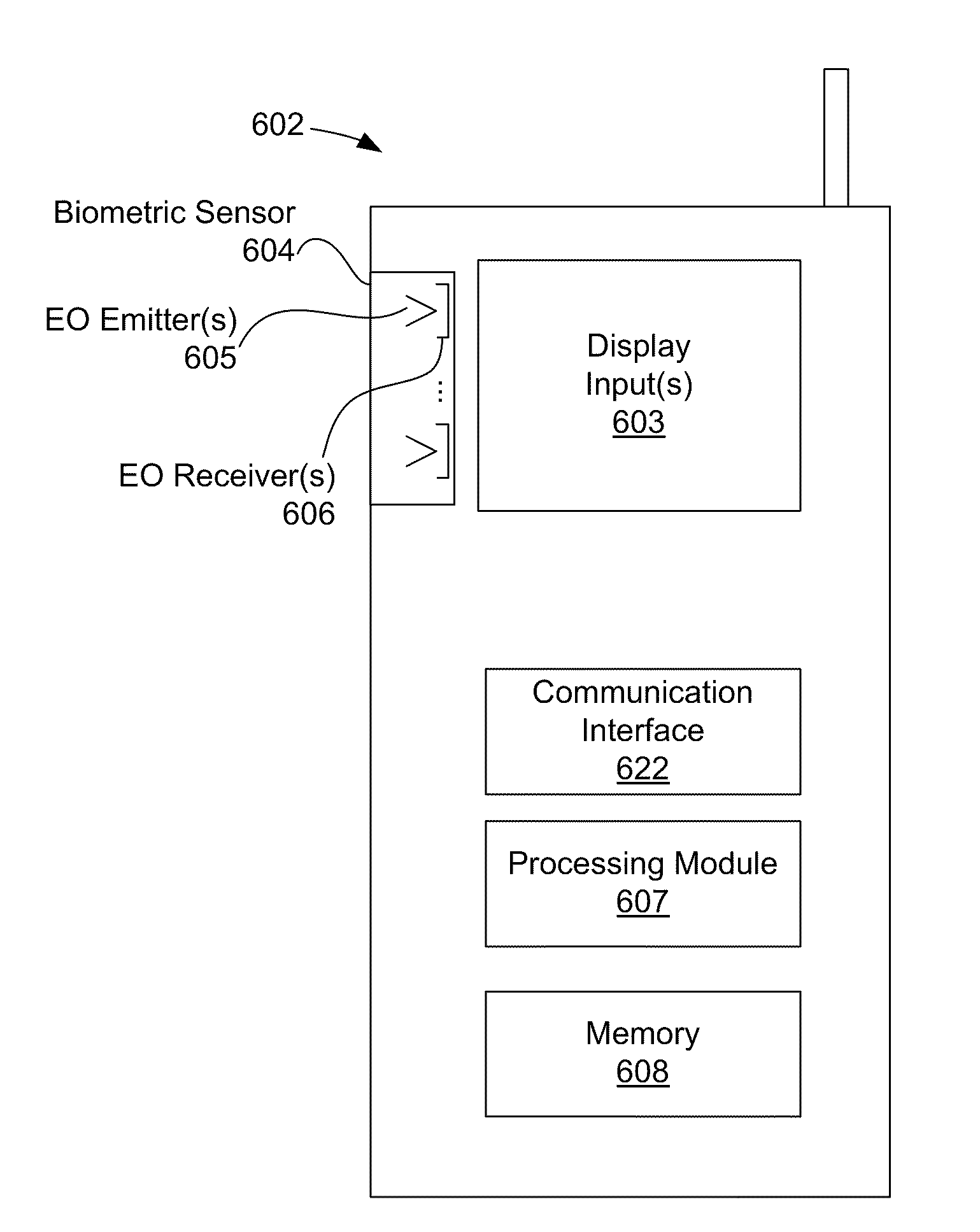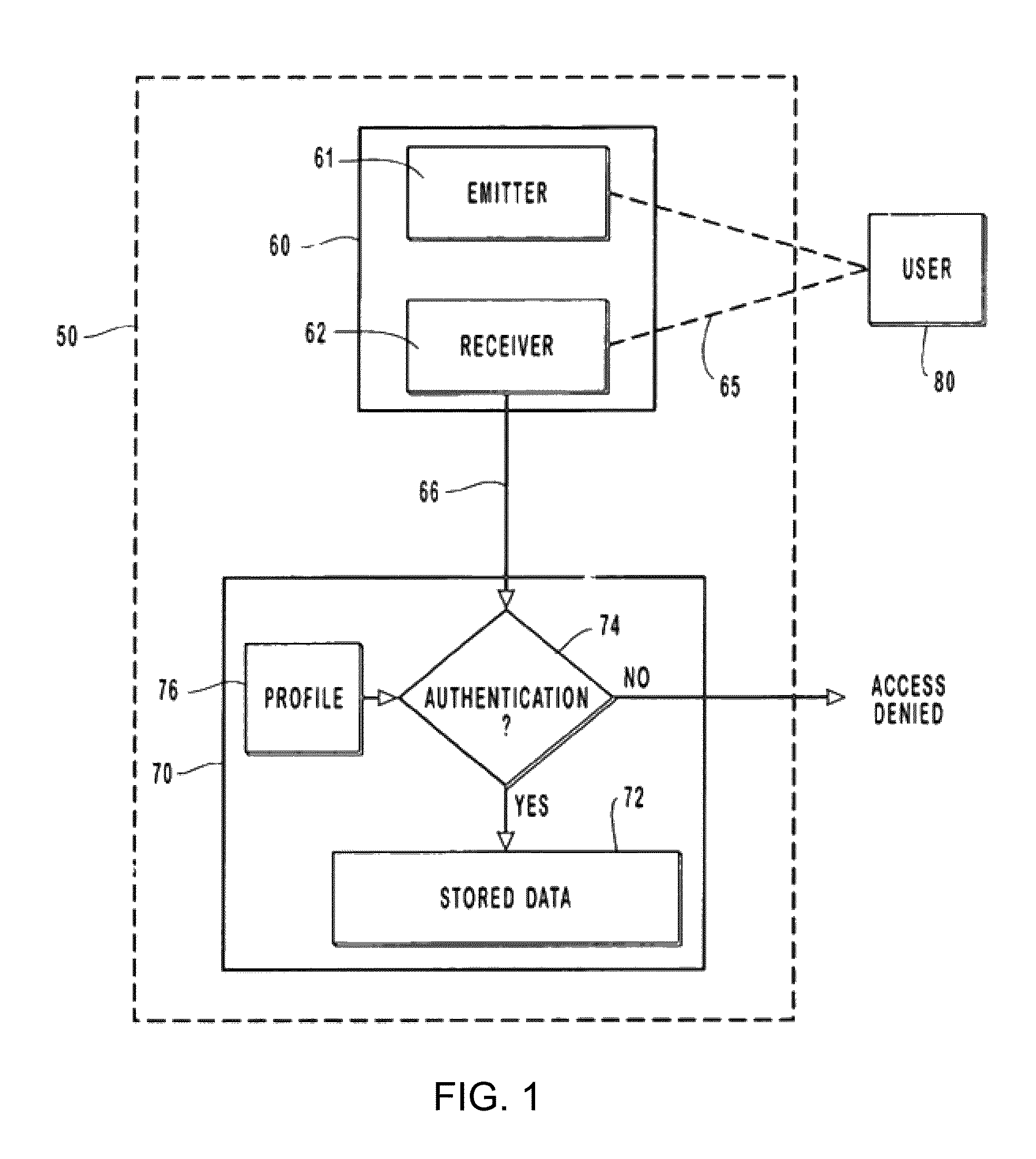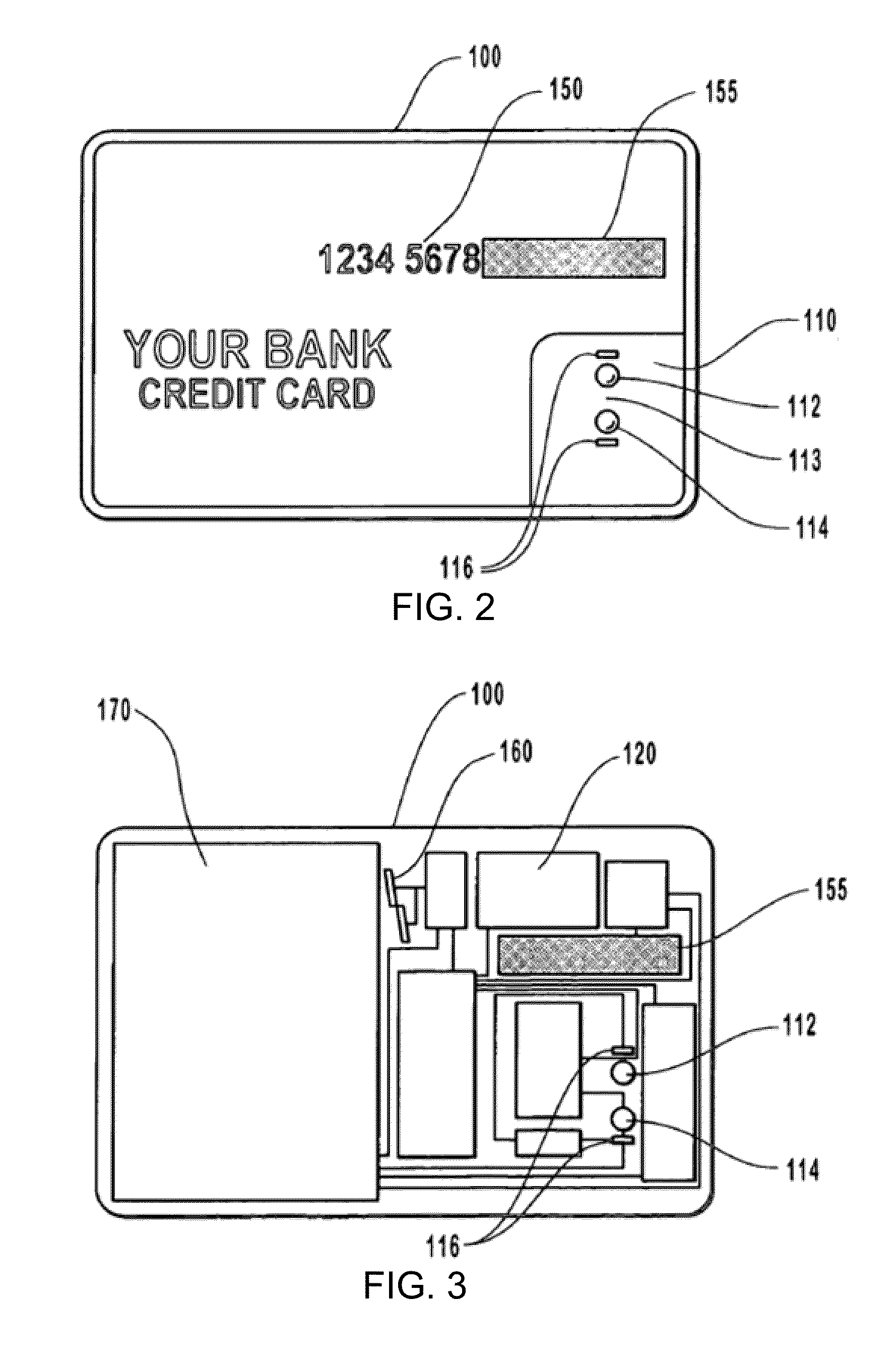Systems and methods for securely monitoring an individual
a biometric and monitoring system technology, applied in the field of biometrically activated devices, can solve the problems of countless hours of agony, victim financial ruination, credit destruction, etc., and achieve the effect of superior security features
- Summary
- Abstract
- Description
- Claims
- Application Information
AI Technical Summary
Benefits of technology
Problems solved by technology
Method used
Image
Examples
Embodiment Construction
[0030]Generally, the biometrically activated device of the present invention comprises a sensor for sensing or determining certain internal biometric markers of a user in communication with a memory module for storing biometric data or biometric profiles of a user or users corresponding to the internal biometric markers obtained by the sensor. When a user attempts to activate the biometrically activated device, the biometric sensor creates a biometric profile of the user and compares that profile with the stored biometric profile of an authorized user. If the user's profile does not match the profile of an authorized user, the data or information stored within the biometrically activated device is unretrievable. However, if the user's profile matches that of an authorized user, the biometrically activated device becomes activated for a set duration of time, thereby providing access to the data or information stored within the biometrically activated device or allowing the user to op...
PUM
 Login to View More
Login to View More Abstract
Description
Claims
Application Information
 Login to View More
Login to View More - R&D
- Intellectual Property
- Life Sciences
- Materials
- Tech Scout
- Unparalleled Data Quality
- Higher Quality Content
- 60% Fewer Hallucinations
Browse by: Latest US Patents, China's latest patents, Technical Efficacy Thesaurus, Application Domain, Technology Topic, Popular Technical Reports.
© 2025 PatSnap. All rights reserved.Legal|Privacy policy|Modern Slavery Act Transparency Statement|Sitemap|About US| Contact US: help@patsnap.com



